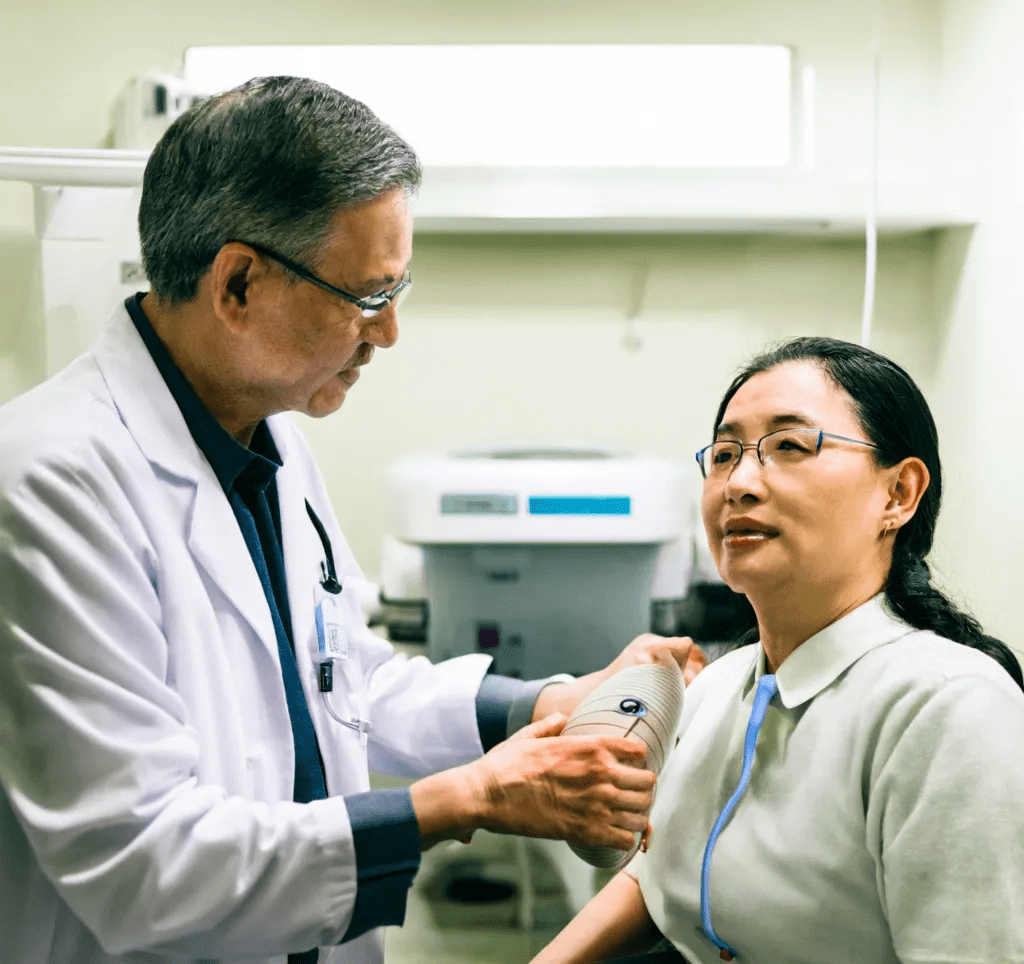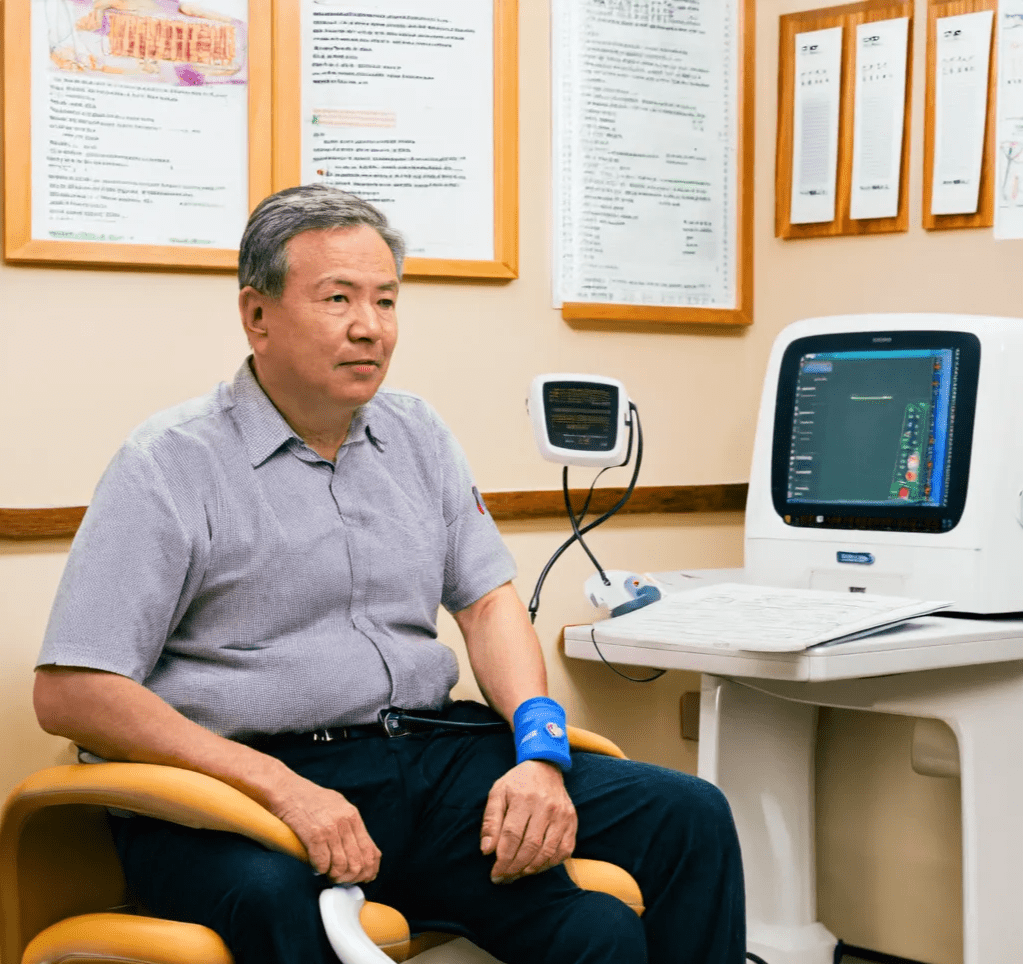Causes of Disease
The cause of hypertension is unclear, and more attention is paid to its risk factors, including genetic factors, age, and unhealthy lifestyles. Among them, 70%-80% of hypertension is related to unhealthy lifestyles. As the risk factors for hypertension gather, the risk of hypertension will increase.
Read MoreSymptoms of hypertension
Many hypertensive patients have other asymptomatic diseases without feeling any discomfort. This is usually called target organ damage, so hypertension is called the "silent killer". Hypertension sometimes has some less specific symptoms, such as headache, paroxysmal dizziness, chest tightness, numbness of the limbs, etc. At this time, patients and doctors should be alert to whether it is a sign of early hypertension.

Different subtypes of hypertension have their special symptoms:
Lorem ipsum dolor sit amet, consectetur adipiscing elit, sed do eiusmod tempor incididunt ut labore et dolore magna aliqua.
- - Gestational hypertension is induced by pregnancy, and the main symptoms are proteinuria and edema. In severe cases, convulsions, coma, and even death may occur.
- - Infants and young children with hypertension may be irritable, overexcited, screaming at night, and have slow growth and development, etc.
- - Menopausal hypertension can manifest as soreness in the waist and knees, edema in the limbs, etc.
When combined with other symptoms, the clinical manifestations of hypertension are more complicated. There are many common complications of hypertension, which will have related symptoms.
Learn moreMedical diagnosis of hypertension
Judgment for Medical Attention
Most patients with hypertension do not have typical symptoms, so it’s easily overlooked and not promptly treated. This suggests that high-risk groups should understand the general symptoms of hypertension and seek medical attention as soon as possible if they feel any discomfort. For general people
Diagnostic Process
When typical symptoms of hypertension or related suspicious symptoms occur, patients should seek medical attention promptly. The diagnostic process is as follows
Diagnostic Criteria
It is pointed out that without the use of antihypertensive drugs, there are 3 times when the clinic blood pressure values are higher than normal, that is, the clinic systolic blood pressure (commonly known as high pressure) ≥140mmHg and/or diastolic blood pressure (commonly known as low pressure) ≥90mmHg, and these 3 blood pressure measurements are not conducted on the same day, then it can be diagnosed as hypertension.
Department of Consultation
The routine treatment department for hypertension is cardiology or general internal medicine. For hypertension with complex symptoms, one can go to the hypertension clinic specially set up in a qualified hospital for treatment.
Hypertension related examinations
Once the diagnosis of hypertension is considered, a comprehensive examination and evaluation
should be conducted, including medical history investigation, physical examination,
laboratory tests, genetic analysis, blood pressure measurement, and target organ damage
assessment.
Medical history
Ask about family history, course of the disease, symptoms, past medical history, clues to
secondary hypertension, lifestyle, and social and psychological factors.
### Physical examination
Hypertension prognosis
Disease Prognosis

Hypertension is a controllable but incurable disease that requires lifelong treatment. Once you start medication, you can't stop or change medicines at will, otherwise, your blood pressure will rise again and become difficult to control. Long-term hypertension can cause serious complications such as heart disease, stroke, renal failure, fundus lesions, and even blindness, and threaten your life. Therefore, the treatment of hypertension requires that your blood pressure value meet the target and remain stable for a long time. If the treatment is effective, you can live and work like a normal person.
Complications

Among the many complications of hypertension, the incidence of hypertension with coronary heart disease is as high as 83%, and most hypertensive patients also have varying degrees of renal damage. The blood pressure control target is below 130/80 mmHg for these two types of patients. Hypertension is also an important cause of cerebral hemorrhage; at the same time, during the process of lowering blood pressure, it is also necessary to pay attention to the fact that too fast a blood pressure reduction may lead to insufficient cerebral perfusion, which may, in turn, induce cerebral infarction.
Hypertension treatment
Daily precautions
Lifestyle intervention is a reasonable and effective treatment for any hypertensive patient at any time, and its purpose is to lower blood pressure, and control other risk factors and clinical conditions. All hypertensive patients should participate in self-management to varying degrees, take the initiative to prevent and treat hypertension, and have good compliance in taking antihypertensive drugs.
Daily Management
Lifestyle intervention is a reasonable and effective treatment for any hypertensive patient at any time, and its purpose is to lower blood pressure, and control other risk factors and clinical conditions.
Home Care
- In daily family life, patients with hypertension should pay attention to regular blood pressure measurement, a proper work and rest schedule, and a combination of work and rest.
Issues Needing Attention
Lifestyle intervention, especially nutrition and exercise intervention, plays an important role in the prevention and treatment of hypertension.
Exercise Guidance
### Exercise guidance Adhere to regular exercise, mainly aerobic exercise, and moderate-intensity aerobic exercise for at least 150 minutes per week. At the same time, ensure moderation and gradual progress.
Exercise Recommendations
Precautions for exercise for patients with hypertension - Strengthen blood pressure monitoring; - Specific groups of people must undergo additional exercise tests and carry out corresponding exercise training according to the test results under the guidance of a doctor;
Daily Monitoring
### Daily monitoring Home blood pressure monitoring requires the selection of appropriate blood pressure measuring instruments, and it’s recommended to use the upper arm home automatic electronic blood pressure monitors certified by international standards. Wrist blood pressure monitors, finger blood pressure monitors, and mercury column blood pressure monitors are not recommended for home blood pressure monitoring.
Related articles
hypertense
Hypertension, also referred to as high blood pressure, is a prevalent chronic condition characterize
nursing care plan hypertension
Hypertension care plans typically encompass blood pressure monitoring, lifestyle modifications, and
hypertension life expectancy
The life expectancy of individuals with hypertension is often influenced by how well their condition
hypertension impact factor
Hypertension is influenced by a multitude of factors, typically encompassing dietary habits, lifesty
hypertensive nephropathy icd 10
Hypertensive nephropathy is a condition that results from prolonged hypertension, leading to kidney
hypertension and heartburn
Hypertension and gastroesophageal reflux disease (GERD) are prevalent health issues, each with signi
icd 10 code for hypertension with ckd
Hypertension coexisting with chronic kidney disease (CKD) is typically categorized under the I12 gro
hypertension with chf icd 10
The co-occurrence of hypertension and heart failure is a prevalent cardiovascular condition that sig
hypertension icd10 code
Hypertension, also referred to as high blood pressure, is categorized under the ICD-10 coding system